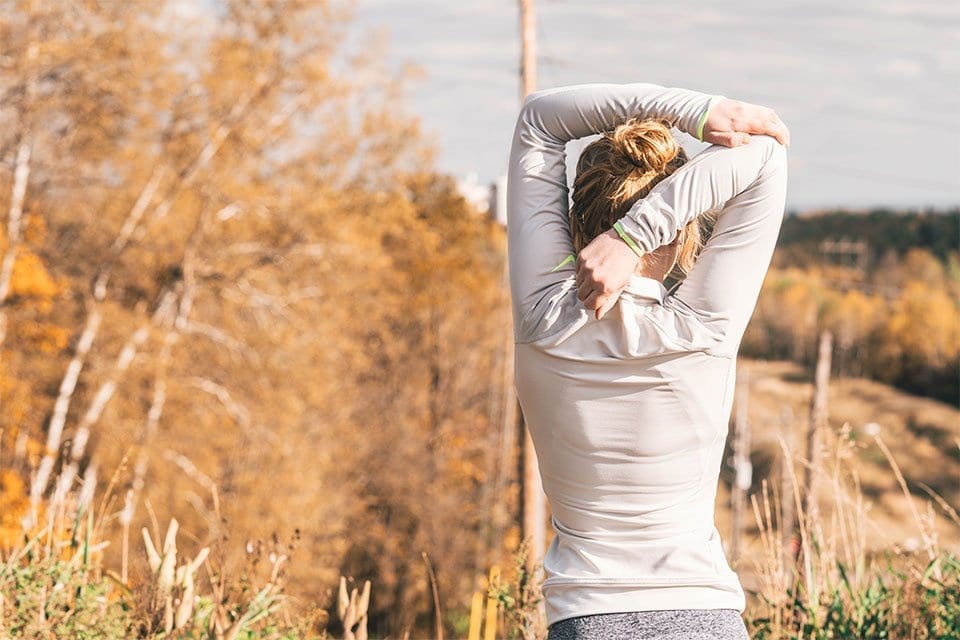How often do you think about your posture? It is easy to get in the habit of being hunched over, especially if you spend a lot of time at a computer or sitting throughout the day. Having good posture takes some extra effort, and it engages our muscles in different ways.1 These micro-movements of engaging our back, shoulder, abdominal, and chest muscles in order to sit up straight can be thought of as the new “twitching.” I love the concept of twitching as exercise – these little micro-movements really add up over the course of a day and are a great exercise for our mind and body. Twitching not only stimulates smaller muscles in our bodies, but it also requires mindfulness and being aware of our movements. It not only strengthens our muscles but also can lift our mood and improve our mindset too.
Poor posture can, in fact, lead to other issues down the road resulting in degradation of the spine which can make us vulnerable to potential injury, issues with our joints, balance, mobility plus our neck, shoulders, and our back. Most of us suffer from poor posture simply due to bad habits!
How to Improve Posture
The great news is, you can improve your posture fairly easily. Simply sit up with your back straight, pull your shoulders back and relax them down. Your chest should feel open and wide, and your feet should be flat on the floor. Take a few slow, deep breaths. Sit that way for at least 30 seconds, and then check in every so often to make sure you’ve maintained that posture and not allowed your shoulders to hunch back down. And that’s it! It’s amazing how relaxing it feels. At first, it may feel tiring – after all, you’re using muscles that you may not be used to using very often. The more you do it, the stronger those muscles will become and the more natural it will feel.
If you’re finding it hard to incorporate regular exercise into your routine, these micro-movements are a great way to exercise throughout the day. The act of simply engaging our muscles in small ways helps us to address weaker areas of our bodies and strengthen those muscles without putting us at risk for injury. The best part is the mindfulness required in maintaining good posture – it leaves me feeling relaxed and energized at the same time. It’s the perfect thing to incorporate into your daily routine, and I encourage you to try it.
Did you miss it?
Go outside for a walk, practice some of my favorite tai chi movements, meditate and even do small things throughout the day like twitching and scratching.
Fasting: Day 3Headaches and certain other unpleasant symptoms are completely normal for many people at the beginning of a water fast, and you will feel better! From my own experience during this particular fast, my most challenging day was yesterday. Around 5 pm I had to take a break and rest because I felt fatigued -- but after getting some relaxation, I started day three feeling completely re-energized. Many of you have been asking what to do for exercise during an extended fast, and that's what I wanted to share with you in today's video. I like to go outside for a walk, practice some of my favorite tai chi movements, meditate and even do small things throughout the day like twitching and scratching.Don’t forget to join me tomorrow night at 9 pm EST on my YouTube channel for a LIVE Q&A on #therealskinnyonfat
Youtube.com/naomiwhittel
References
- Kim, DeokJu, et al. “Effect of an Exercise Program for Posture Correction on Musculoskeletal Pain.” Journal of Physical Therapy Science, The Society of Physical Therapy Science, June 2015, https://www.ncbi.nlm.nih.gov/pmc/articles/PMC4499985/





